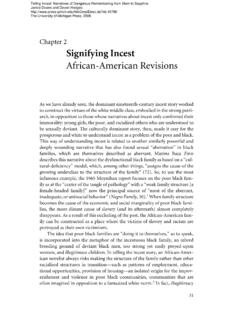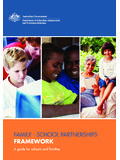Transcription of Motivation to Learn and Teacher –Student Relationship - ed
1 Journal of International Education and Leadership Volume 6 Issue 2 Summer 2016 ISSN: 2161-7252 Motivation to Learn and Teacher Student Relationship Fatih Koca, Karadeniz Techical University When children enter school for the first time, they encounter a variety of new challenges that include creating positive relationships with peer groups and adults as well as learning to meet the demands of a wide range of cognitive, social, and academic tasks (Baker, 2006; Birch & Ladd, 1997; Pianta, Steinberg, & Rollins, 1995). Infants and young children appear to be mobilized by curiosity and driven by an intense need to explore, interact with, and discover their environment Therefore, understanding and documenting the importance of young children s Motivation to Learn is very important.
2 Motivation to Learn refers to a competence acquired through general experience that is predominantly stimulated through modeling, communication of expectations, and direct instruction or socialization by significant others (Brophy, 1987). This review of the literature focuses on the importance of young children s Motivation to Learn in their academic and social competencies, the effects of the quality of Teacher -student relationships on their Motivation to Learn , and the implications for students who exhibit poor Motivation in the early years at school years through the lenses of Self-Determination and Expectancy-Value for Achievement Motivation theories. Keywords: Motivation to Learn , Teacher student Relationship , academic achievement, school adjustment Introduction It is a generally accepted truth that the future lies in the hands of the next generation and that the success of the next generation is based largely on education.
3 Increasing numbers of reports and articles in the media have been published in recent years showing that education of the next generation in the United States is lacking. The long-standing superpower stands to lose its status on the global playing field, threatening the way America has come to see itself and its role in the world. These trends have caused panic, and politicians have claimed a rededication of their efforts in this arena. However, while the belief that students are falling behind the world academically is widespread, no single concrete solution has emerged. The leading approach to improve the education system currently centers on raising standards that can be measured through standardized tests. The idea is that without a quantifiable measure of progress, schools cannot know whether they are improving; similarly, by comparing their results with those of other schools, it is reasoned, schools will be motivated to make even greater strides.
4 It has been suggested (Thompson, 2010) that an emphasis on student Motivation may be far more valuable than an emphasis on which specific facts students have memorized from history or which functions they can calculate in mathematics. While it may be somewhat counterintuitive to argue that education is best improved by focusing on something other than the material the students are expected to Learn , many studies have shown that this very well might be the Motivation to Learn Koca 2 case. The idea states, in brief, that motivated students Learn more, Learn better, and Learn by themselves. That is to say, a tradeoff is more than worth it: To dedicate some percentage of a Teacher s time and efforts to motivating students will translate at the end of the day to those students having learned a lot more than if that same time and effort had been invested in conventional transfer-of-knowledge methods, or far worse, test preparation.
5 Accordingly, many researchers have conducted studies on student academic Motivation and student goal orientation. In particular, those researchers who concentrate on the dynamics of Motivation within classroom settings have started to emphasize the potential role of relational variables ( , Davis, 2003; Pianta, 1999) and Teacher behaviors ( , Skinner & Belmont, 1993) in student academic engagement. In the last 40 years, researchers examined student Motivation , focusing on several questions ( , Pintrich, 2003 Skinner, 1995; Stipek, 1988): What moves students to Learn ? What influences the quantity and quality of the effort they invest? What choices do students make? What makes them persist in the face of hardship?
6 How is student Motivation affected by children s relationships with significant adults? How does Motivation develop? How does the school environment affect it? Thus, educators, parents, and students have paid substantial attention to the importance of Motivation in school because of significant contributions it has been shown to have on student academic learning, self-esteem, self-efficacy, and school readiness. Motivation to Learn is a competence acquired through general experience that is predominantly stimulated through modeling, communication of expectations, and direct instruction or socialization by significant others (Brophy, 1987). Infants and young children appear to be mobilized by curiosity and driven by an intense need to explore, interact with, and discover their environment.
7 In the classroom setting, the content covered and the social context can vary continuously. Therefore, children are frequently involved in unfamiliar learning environments. This can create ambiguity for some students but can challenge others. Accordingly, students try to make sense of novel learning situations by referring to their motivational beliefs (Brophy, 1987). Motivational belief refers to the opinions, judgments, and values that students hold about objects, events, and learning processes (Brophy, 1987). Motivational belief also refers to students opinions of the efficacy or effectiveness of learning and the teaching process. For example, children s beliefs about their academic experiences have important implications for their school adjustment and academic achievement (Mueller & Dweck, 1998; Wigfield & Eccles, 2002).
8 Accordingly, expectancies and values are directly determined by other achievement-related beliefs such as achievement goals, self-schemata, and beliefs about science (Wigfield, 1994). Similarly, motivational beliefs act as a frame of reference that guides students thinking, feelings, and actions in any subject area. For example, motivational beliefs about mathematics determine which strategies and motivational goals students develop. Significantly, a student s beliefs about a domain are predominantly optimistic or pessimistic, thus providing a positive or negative context for learning (Skinner, 1995; Stipek, 1988; Vermeer, Boekaerts, & Seegers, 2000). Teacher child relations play a prominent role in the development of competencies in early school-age years (Pianta, Steinberg, & Rollins, 1995; Pianta & Walsh, 1996) and during the transition to middle school (Davis, 2003; Pianta, 1999).
9 Teachers may operate as social agents, and they can affect students intellectual and socioemotional experiences by creating a classroom setting that stimulates both student Motivation and learning. Moreover, Teacher student relationships serve a regulatory function for the development of social, emotional, and academic skills (Davis, 2006). Studies have shown that positive Teacher student relationships can lead to a warm classroom environment that facilitates successful adaptation in school and thereby increases student Motivation to Learn . In contrast, conflictual Teacher student relationships are associated with lower achievement and self-esteem as well as ongoing relational conflict with both teachers and peers (Buyse, Verschueren, Doumen, Van Damme, & Maes, Motivation to Learn Koca 3 2008; Hamre & Pianta, 2005).
10 Research has further indicated that children with whom teachers report positive relationships are outgoing and socially competent (Birch & Ladd, 1997 Pianta et al., 1995). Moreover, in these studies the teachers believed that high-quality relationships between teachers and their students enhance classroom learning and Motivation by building a safe and supportive classroom context for students to open up and listen to the teachers and take intellectual risks (Birch & Ladd, 1997; Pianta et al., 1995). Similarly, the beliefs teachers hold about teaching and learning, and the nature of expectations they have about their students also exert a powerful influence (Stipek, 1988). These findings support the key role of Teacher student relationships on children s Motivation to Learn and school adjustment.













